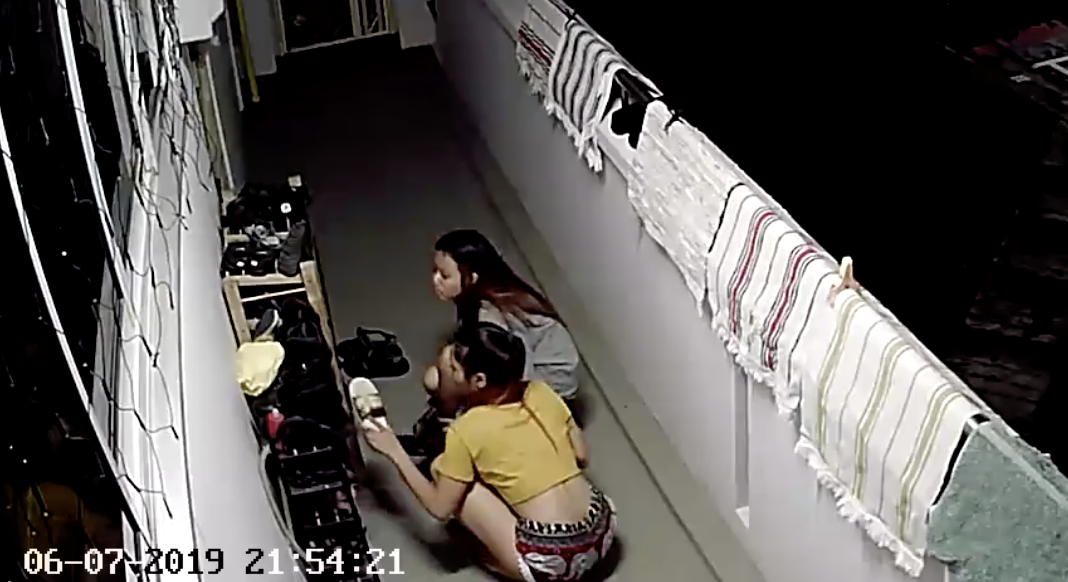ARTICLES
- HOME
- -
- ARTICLES
Enhancing Security: The Power of CCTV Monitoring in Risk Reduction and Safety Enhancement

In today's world, where security threats and risks are ever-present, the need for robust security measures has become paramount. One of the most effective and widely adopted solutions is closed-circuit television (CCTV) monitoring. This technology has revolutionized the way we approach security, offering a proactive and comprehensive approach to risk mitigation and safety enhancement.
CCTV monitoring systems utilize strategically placed cameras to capture real-time video footage of a designated area. These systems are designed to provide a constant stream of visual information, enabling security personnel to monitor and respond to potential threats or incidents promptly. By leveraging the power of CCTV monitoring, organizations and individuals can significantly reduce the likelihood of security breaches, criminal activities, and other undesirable events.
Importance of CCTV monitoring in risk reduction:
Implementing CCTV monitoring systems plays a crucial role in mitigating various risks associated with security breaches. These systems act as a deterrent, discouraging potential perpetrators from engaging in unlawful or undesirable activities. The mere presence of visible cameras can often serve as a powerful deterrent, causing individuals with malicious intentions to reconsider their actions.
Furthermore, CCTV monitoring systems provide valuable evidence in the event of an incident. The recorded footage can assist law enforcement agencies in identifying suspects, reconstructing events, and gathering crucial evidence for investigations. This capability not only aids in the apprehension of perpetrators but also serves as a valuable tool in legal proceedings, ensuring that justice is served.
Benefits of CCTV monitoring in enhancing safety:
Beyond risk reduction, CCTV monitoring systems offer numerous benefits in enhancing overall safety and security. These systems enable real-time monitoring of critical areas, allowing for prompt detection and response to potential threats or emergencies. Security personnel can quickly assess situations and take appropriate actions, minimizing the impact of incidents and safeguarding lives and property.
CCTV monitoring also plays a vital role in crowd management and traffic control. By monitoring pedestrian and vehicular movements, authorities can identify potential bottlenecks or overcrowding situations and implement measures to maintain order and ensure smooth operations. This capability is particularly valuable in large public spaces, events, or high-traffic areas.
Types of CCTV cameras for effective monitoring:
To ensure effective monitoring, it is essential to select the appropriate types of CCTV cameras based on specific requirements and environmental conditions. Here are some commonly used CCTV camera types:
-
Bullet Cameras: These compact and cylindrical cameras are ideal for outdoor surveillance, offering weather resistance and a wide viewing angle.
-
Dome Cameras: Designed for both indoor and outdoor use, dome cameras provide a discreet and vandal-resistant solution, making them suitable for high-risk areas.
-
Pan-Tilt-Zoom (PTZ) Cameras: PTZ cameras offer remote control capabilities, allowing operators to pan, tilt, and zoom the camera for a comprehensive view of the monitored area.
-
Night Vision Cameras: Equipped with infrared technology, night vision cameras enable clear visibility in low-light or dark conditions, ensuring round-the-clock monitoring.
-
Wireless Cameras: Wireless CCTV cameras eliminate the need for complex wiring, providing flexibility and ease of installation in various environments.
Factors to consider when installing CCTV cameras:
Proper planning and consideration of various factors are crucial for effective CCTV camera installation. Here are some key factors to consider:
-
Coverage Area: Assess the areas that require monitoring and determine the optimal camera placement to ensure comprehensive coverage.
-
Lighting Conditions: Evaluate the lighting conditions in the monitored areas to select cameras that can perform optimally in different lighting scenarios.
-
Environmental Factors: Consider factors such as weather conditions, temperature ranges, and potential obstructions that may impact camera performance.
-
Storage and Backup: Determine the appropriate storage solutions for recorded footage, ensuring sufficient capacity and backup mechanisms for data preservation.
-
Integration with Other Systems: Explore the possibility of integrating CCTV monitoring with other security systems, such as access control or alarm systems, for enhanced security management.
Best practices for CCTV monitoring:
To maximize the effectiveness of CCTV monitoring systems, it is essential to follow best practices. These include:
-
Proper Training: Ensure that security personnel responsible for monitoring are adequately trained in operating the CCTV systems, identifying potential threats, and responding appropriately.
-
Regular Maintenance: Implement a regular maintenance schedule to ensure that cameras, recording devices, and other components are functioning optimally and promptly address any issues or malfunctions.
-
Policy and Procedure Development: Establish clear policies and procedures for CCTV monitoring, addressing aspects such as data privacy, retention periods, and access controls.
-
Continuous Improvement: Regularly review and assess the performance of the CCTV monitoring system, identifying areas for improvement and implementing necessary upgrades or enhancements.
Integrating CCTV monitoring with other security systems:
To further enhance security and streamline operations, integrating CCTV monitoring with other security systems can be highly beneficial. For example, combining CCTV with access control systems allows for visual verification of individuals entering or exiting restricted areas, ensuring heightened security and accountability.
Additionally, integrating CCTV monitoring with alarm systems can provide a comprehensive security solution. When an alarm is triggered, the CCTV system can automatically focus on the area of concern, enabling security personnel to quickly assess the situation and respond accordingly.
Case studies showcasing the effectiveness of CCTV monitoring:
Numerous case studies have demonstrated the effectiveness of CCTV monitoring in enhancing security and preventing or solving crimes. Here are a few notable examples:
-
Retail Store Theft Prevention: A major retail chain implemented a comprehensive CCTV monitoring system across their stores, resulting in a significant reduction in shoplifting incidents and increased apprehension of perpetrators.
-
Campus Security Enhancement: A university campus installed a network of CCTV cameras, enabling real-time monitoring and prompt response to incidents, contributing to a safer environment for students and staff.
-
Traffic Monitoring and Incident Response: A city's transportation authority utilized CCTV monitoring to monitor traffic flow and quickly identify and respond to accidents or congestion, improving road safety and reducing response times.
Future trends in CCTV monitoring technology:
As technology continues to evolve, the field of CCTV monitoring is also witnessing exciting advancements. Some of the future trends include:
-
Artificial Intelligence (AI) and Machine Learning: AI and machine learning algorithms are being integrated into CCTV systems to enhance object recognition, behavior analysis, and threat detection capabilities.
-
Cloud-based Solutions: Cloud-based CCTV monitoring solutions offer scalability, remote access, and reduced infrastructure costs, making them an attractive option for organizations of various sizes.
-
Advanced Video Analytics: Advanced video analytics techniques, such as facial recognition, license plate recognition, and object tracking, are becoming more sophisticated, providing enhanced monitoring and analysis capabilities.
-
Integration with IoT Devices: CCTV monitoring systems are increasingly being integrated with Internet of Things (IoT) devices, enabling seamless data exchange and automated responses to detected events.
Conclusion:
In conclusion, CCTV monitoring has emerged as a powerful tool in enhancing security, reducing risks, and promoting safety in various settings. By leveraging the capabilities of this technology, organizations and individuals can proactively monitor and respond to potential threats, deter criminal activities, and safeguard lives and property.
While CCTV monitoring systems offer numerous benefits, it is crucial to implement them responsibly, adhering to best practices and respecting privacy and ethical considerations. By striking the right balance between security needs and individual rights, CCTV monitoring can play a vital role in creating a safer and more secure environment for all.
Prioritize your security today by exploring our comprehensive range of CCTV monitoring solutions. Our team of experts will work closely with you to assess your specific needs and design a tailored system that meets your risk mitigation and safety enhancement requirements. Contact us now to schedule a consultation and take the first step towards a more secure future.




